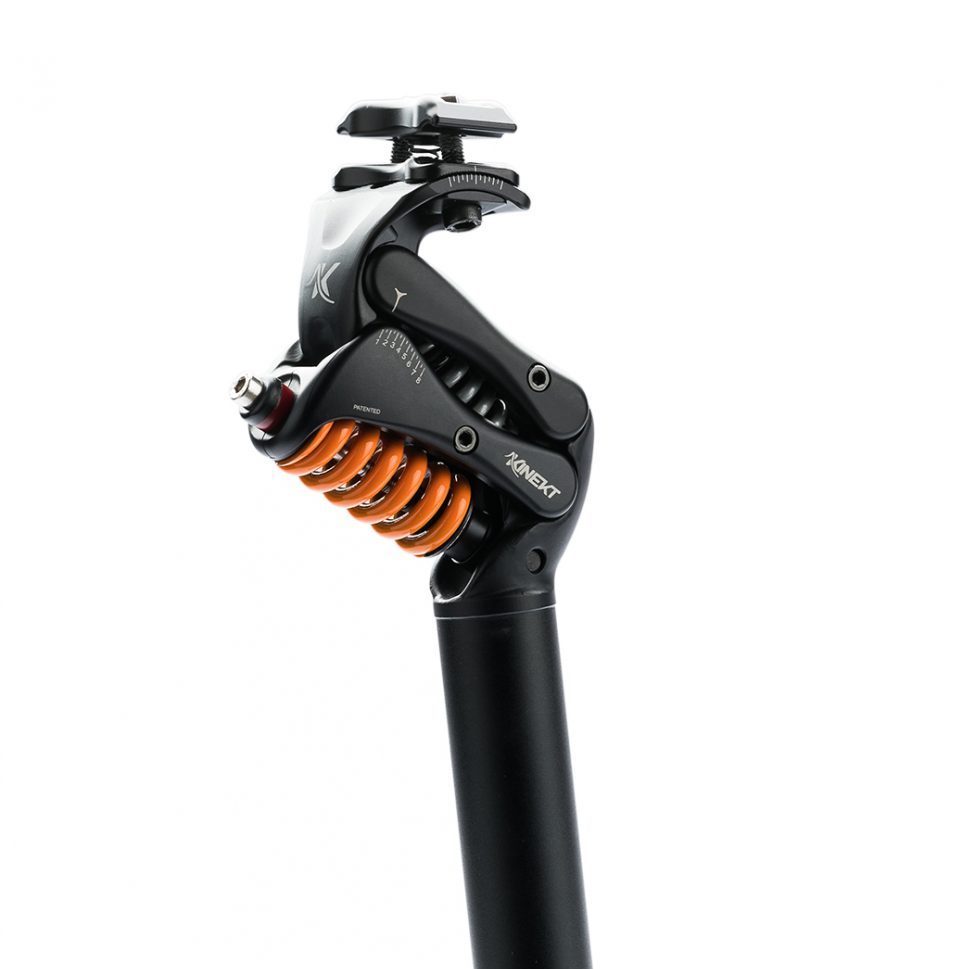I commented in this thread early in my use of the Kinekt, and since the thread is now undead, wanted to update accordingly.
I am building a bike right now - the same type as the one that has my Kinekt on it - and after over a year of daily use decided against equipping it with a Kinekt again. The reason is - and as far as riding style goes I am a pedaler, not a throttler - at high cadence, the Kinekt will pogo on me. The Thudbuster LT does not do that.
The Kinekt is a great product. Very well made. And it is correctly described by the factory as being different from other suspension posts in that it provides more of a bump 'isolation' for the rider rather than a suspension cushion. Its response is so fast it just makes bumps go away. BUT when my legs are windmilling at about 60+ rpms, I start bouncing up and down unless i make a conscious effort to use my leg muscles to support my body and dampen out the post's tendency to do this. That ain't right.
Worth noting: I am 250 lbs and I am riding on the no-longer-sold Kinekt XL variant. Note it uses the gray small and orange large springs. Someone above noted above that orange was not available and this is incorrect. Orange was available after consultation with Kinekt as an option (I have spoken to them a number of times), and on the XL models which had I think a 250-320 lb weight range, orange was the default shipped with the post. Nowadays, Kinekt uses the same post and provides its entire weight range with spring changes... the XL I have was more heavily built than the regular posts.
For my 250 lb self, I take the Thud LT and add in the firmest of the optional elastomers. Its fine under all pedaling circumstances. I have one of the new-design LT's on my Surly and I know from that it has no quirks.
Here are a couple of pics of the installed Kinekt post. They show the post and a couple of related things that have been brought up in the thread over time.
View attachment 139193
First, people were talking about the post sliding down.
My solution to this across all my bikes nowadays is to use a double post clamp. These are primarily marketed to carbon fiber seatpost owners, but they put enough grip on any post so you don't have to go and do something extreme like put 18 Nm on a poor little M5 or M6 bolt. My original need on a different bike was to overcome a frame quirk where it was a skootch larger than the advertised diameter. About half a millimeter. I needed precision calipers to nail down the culprit. Everything fit, but ride it to work and the post slid down no matter what. The dual clamp ended my suffering so well I made them the default on every bike I build. The one shown is the $40 KCNC, which was all I could find at the time. Waiting for install now is a Silverock that cost half that and is lower-profile to boot. If buying one of these, make sure it is a dual clamp that clamps the
frame with one bolt and the
post with another. Double-bolt clamps don't count if they are clamping just the frame.
Next is theft-proofing. The double clamp is a bit of a deterrent, but something I have been using for a lot longer is a seat leash. A short cable that is not going to stop a determined thief, but it ends the possibility of a snatch-and-grab. One end of the cable is noosed around the root of the seatstays. The other end is installed inside connection between the seat rails and the seatpost. You have to either cut the cable so you can then unbolt the seatpost, or you have to unbolt the seat from the seatpost so you can now unbolt the seatpost. this seat leash is actually sold by Kryptonite but they do not advertise it for its purpose, for some reason. You have to know why they sell a short, small 5mm cable like this.


